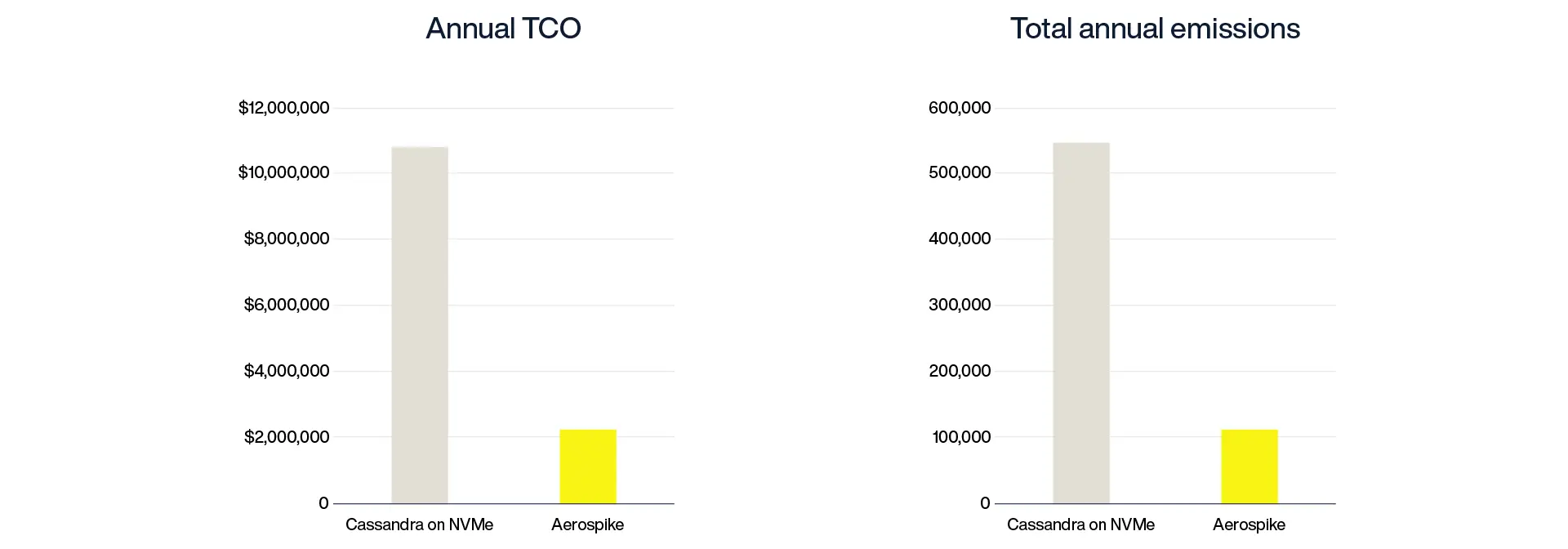Maximizing database management: How to achieve cost efficiency, high performance, and a low carbon footprint all at once
Learn how strategic IT choices can lead to environmental and economic benefits while reducing carbon footprints.
In the current digital era, where data drives decisions, the sustainability of IT infrastructure has become a pivotal concern. The need to reduce carbon footprints without compromising performance is not just a goal but a necessity for modern organizations.
Let's explore how embracing efficient software platforms and implementing strategic hardware choices can lead to significant environmental and economic benefits.
Understanding the carbon impact of IT
The IT sector is a significant contributor to global carbon emissions, primarily due to its reliance on electricity generated from fossil fuels. As technology advances, the demand for energy in the IT sector is projected to increase, making sustainable practices crucial for environmental and business sustainability.
Global energy consumption: According to Harvard research, by 2030, the IT sector could account for up to 20% of global energy demand.
Emissions from training AI: Training advanced AI models can produce substantial carbon emissions, highlighting the need for efficient computing methods. The MIT Technology Review reports that training a single artificial intelligence (AI) model can result in more than 626,000 pounds of carbon emissions (almost 5x the lifetime emissions of an average American car).
In short, achieving speed, affordability, and environmental sustainability becomes more feasible once an organization shifts its focus to transformative change.
The role of efficient software in reducing emissions
Efficient software platforms are essential in reducing the IT sector's carbon footprint. Platforms like Aerospike not only enhance performance but also decrease the energy consumption and carbon emissions associated with large-scale data operations.
Reducing emissions by 20%: By optimizing software efficiency, companies can significantly cut down their environmental impact.
Cost-effective solutions: Investing in advanced technologies proves to be a cost-effective strategy, fostering innovation while cutting costs.
Aerospike: A study in efficiency
In a world that runs on data, the Aerospike Database delivers performance, availability, and scalability without compromise. Aerospike was built with efficiency in mind from the start. In the software industry, efficiency is often considered in terms of speed. But there is more to it — efficient software inherently requires fewer hardware resources.
In a white paper comparing CO2 emissions, costs, and overall efficiency between Apache Cassandra and Aerospike, results show that the choice of hardware and the right underlying technology can make a significant difference in reducing CO2 emissions and total cost of ownership (TCO).
Compared to Apache Cassandra, results show that while Aerospike requires more physical resources per node, the overall amount of hardware required to store one petabyte of data on AWS is significantly smaller with Aerospike.

Figure 1. Hardware requirement to store 1PB of data on AWS (Data from page 8 of Minimising CO2 Production from IT Systems).
With the lower hardware requirement, Aerospike immediately outshines the competition at a fraction of the annual TCO and carbon emissions. Though saving 500 tons of CO2 doesn’t seem like much against the billions of tons of CO2 emitted globally each year, it is the equivalent of planting 123.5 acres (or 50 hectares) of trees.

Figure 2. Annual costs and CO2 emissions efficiency for 1PB workload (Data from page 14 of Minimising CO2 Production from IT Systems).
In short, the Aerospike Database:
Enables an 80% reduction in server or cloud instance footprints
Provides improved performance at 80% of the TCO of first-generation NoSQL and relational databases
Reduces carbon footprint by 5x that of competitors
Innovative approaches to sustainability
Aerospike employs strategic measures to enhance performance while reducing environmental impact.
The path forward involves not only adopting efficient technologies but also innovating in the ways these technologies are scaled and implemented.
Vertical vs. horizontal scaling
It's no accident that Aerospike outperforms other databases with a fraction of the servers, costs, and carbon emissions. Many distributed database providers focus on horizontal scaling, adding "cheap" commodity servers. While Aerospike also scales horizontally, it thrives with vertical scaling, taking advantage of larger, high-performance servers. In particular, Aerospike’s unique Hybrid Memory Architecture (HMA) enables memory-like performance with SSDs, putting database indexes in memory and data on the more efficient SSD.
Leveraging modern hardware
Aerospike can also run on some of the latest, greenest compute instances, such as AWS's ARM-based Graviton servers and HPE Alletra. The Aerospike database is optimized for AWS Graviton processors to improve price performance by 63%. This benchmark illustrates that Aerospike on AWS Graviton delivers 27% TCO savings and 49% carbon emissions reductions compared with non-Graviton environments.
Similarly, new HPE solutions with Aerospike can reduce costs, decrease energy consumption, and reduce carbon, server, and cloud instance footprints — all while supporting business growth. HPE solutions with Aerospike bring together the powerful Aerospike Database with the high performance of the HPE Alletra 4110 data storage server, all validated in purpose-built configurations, well suited for demanding real-time data access.
Infinite scale, speed, and sustainability
Industries are evolving, and the synergy between efficient software and strategic hardware choices is pivotal in shaping sustainable IT infrastructures. Platforms like Aerospike showcase the possibility of achieving high performance with minimal environmental impact, emphasizing substantial cost savings and innovation in IT operations. Embracing these technologies isn't just about reducing carbon footprints; it's about establishing a new benchmark in the tech realm, where performance and environmental responsibility go hand-in-hand.




